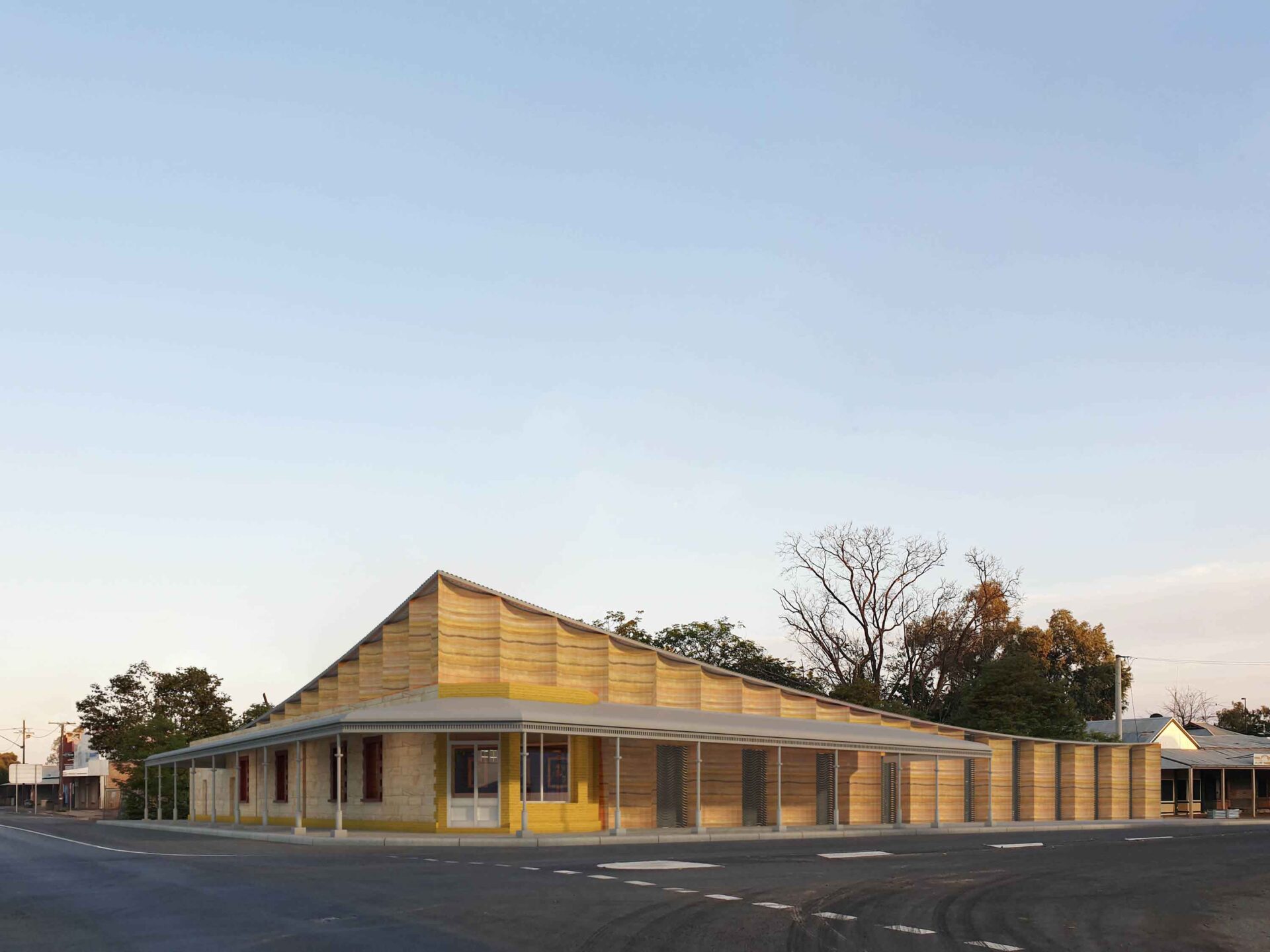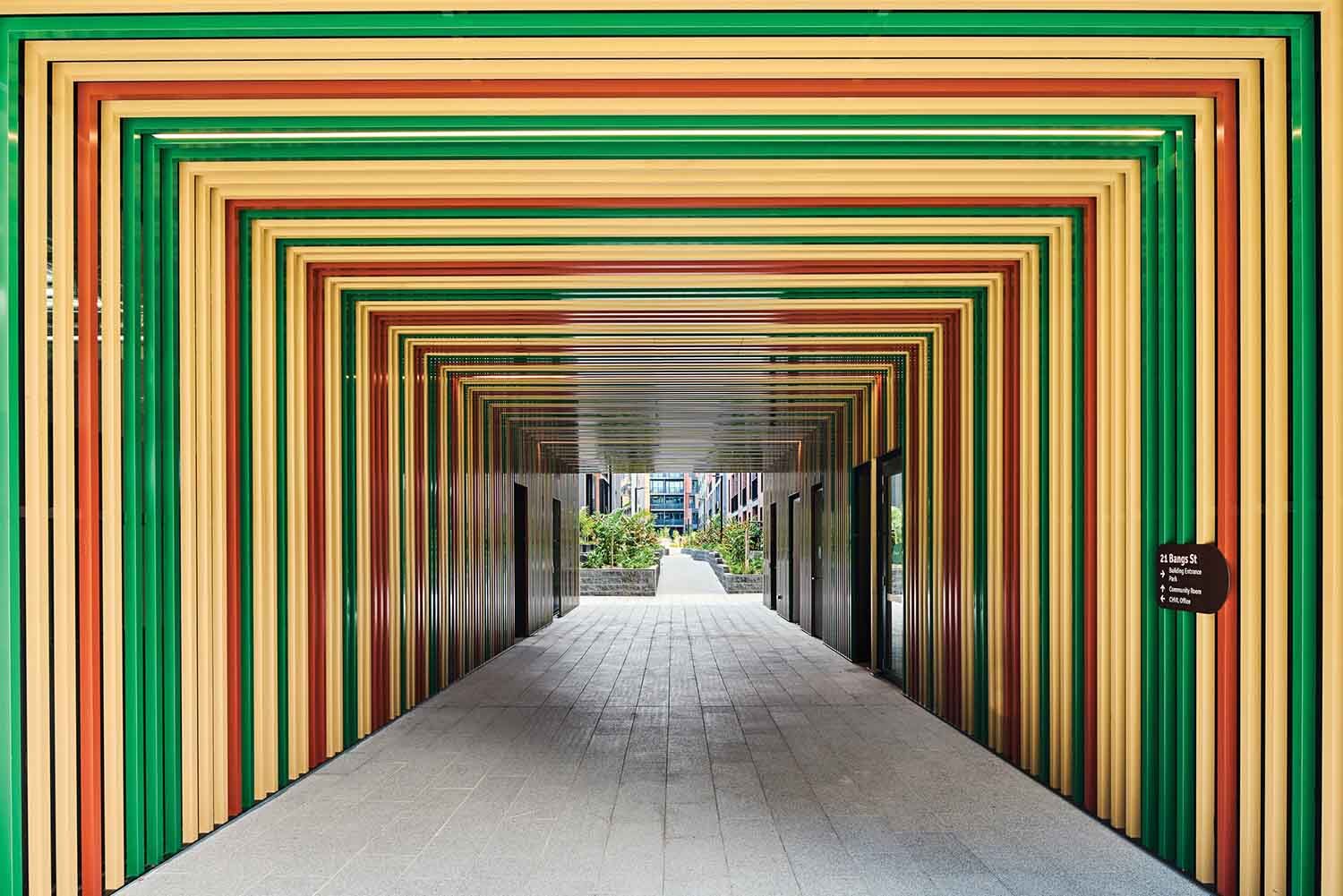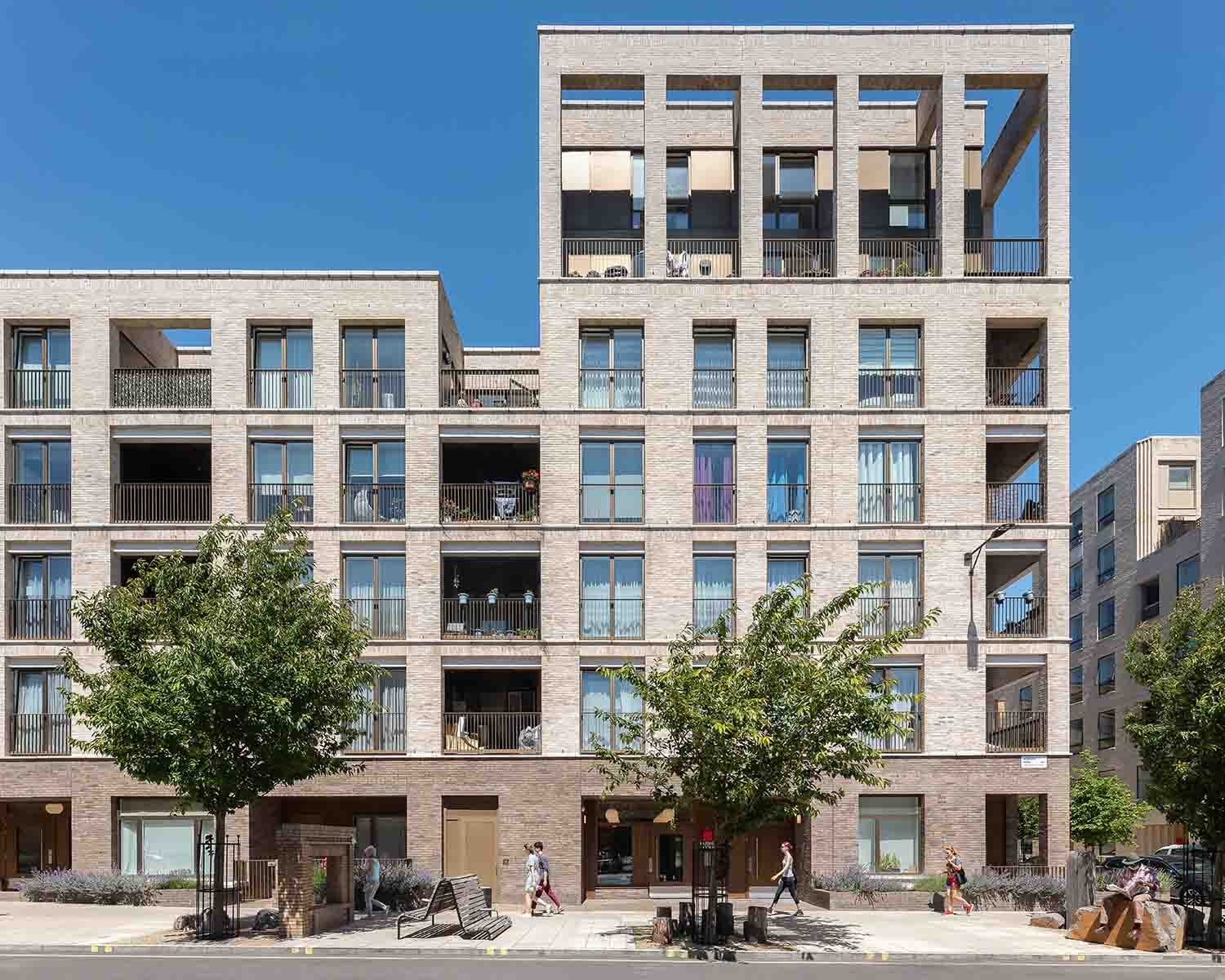More of us: What’s now and what’s next for Indigenous architectural practice

As two of the few female First Nations architects in Australia, Marni Reti and Tiana-Jane Furner are continuing the legacy of First Nations architectural leadership. Here they discuss the importance of being involved in all stages of a project.
Georgia Birks: What projects have you been working on recently and what excites you about them?
Marni Reti: At the moment at Kaunitz Yeung Architecture, I’m working on several projects across different stages. We’ve got three rural Aboriginal art centres that are in the final couple of months of construction. One is in Arlparra (Utopia), which is three hours north of Alice Springs. One is in a place called Kaltukatjara (Docker River), which is about three hours west of Uluru. And the next one is Tjukular, which is about another hour-and-a-half west of Kaltukatjara. And then, we’ve got three more projects in the early concept and consultation phase.
Arts centres in regional and rural Australia are one of the primary economic contributors to the community and many of the art centres are run by a board of local people. Some of the artists in these centres are world-famous. They exhibit in biennales and exhibitions around the world, but they aren’t working in conditions that are representative of that. It’s exciting to create architecture that provides the amenities they need to produce their incredible art.
Tiana-Jane Furner: A project that I’ve done recently that really resonates with me is Naya Wa Yugali, which was a feasibility and masterplan development that I led under Kevin O’Brien at BVN. The client was the National Aboriginal Islander Skills Development Association (NAISDA).
Working on this project was a really enjoyable time for me because it’s not often that both the client’s and the architect’s views and values align completely. For example, we agreed that we weren’t going to start thinking about design until we had spoken to all community groups on Darkinjung Country.
We originally put in our program that the conversations were going to take place over three weeks but coordinating community into the same room is really challenging, so it took four times as long. No one was stressed about getting the conversations done quickly, the client saw the value just as much as we did. It was a harmonious, enjoyable process. It was the first project that I led at BVN, and I think it will stay close to me for a really long time.
GB: The journey to registration is long and tedious. Now that you’re on the other side of it, where do you feel that you and your skillset have the most agency in the architectural process?
MR: I’m committed to being a good architect across the full spectrum of traditional architectural services. From consultation to concept to contract administration – to see projects through to the very end. I feel very empowered in my position as an architect first and foremost. I think young mob that want to do this job shouldn’t allow themselves to get pigeonholed, or let practices take advantage of their identity for the benefit of the practice.
TJF: I completely agree with Marni. I am always adamant at work that I want to know how to do everything from start to finish. I want to see the project all the way through. BVN is a great place for allowing me to have that continuous voice from start to finish.
Becoming a registered architect has given me more responsibilities, which is challenging but also so rewarding. Not only
am I seeing my value in becoming a registered architect, but so are my peers and employers.
In general, we often see our voices as a strong agency at the start of a project. However, as Marni also said, our voices need to be heard from concept to completion. The more we understand every aspect of how architecture is being formed, the more we can contribute.
For example, when we understand what a facade build-up is, we can then learn where those resources are coming from and how much carbon is being used to create and transport these materials. In turn, specification decisions play an important role in the health of Country.

MR: You’re so right, Tiana. So much can shift when you go to tender, so much can shift when the budget and scope change. So, First Nations experts not being involved past concept stages is dangerous for the outcome. I think the answer to the question is: before registration, we get given more agency than we really should be given at the early stages of the project. What registration gives us is the qualification to stay in project conversations long-term.
GB: Have you noticed any shifts in design practice since the changes to National Standard of Competency for Architects and Connecting with Country frameworks were released? Are new processes or steps becoming the new normal or is it still a niche pathway?
TJF: I don’t use the Connecting with Country framework very often in practice because at BVN, Kevin O’Brien has developed his own Designing with Country Framework, and we’ve been using that in our practice for the five years that I’ve been there. So, I can only really comment on that, but I’m imagining there would be some similarities between the two. I think BVN’s Designing with Country Framework has been fantastic in the way that [it helps] my colleagues to feel comfortable in understanding how to put Country at the forefront of design, how to meaningfully work with communities and how to put research into practice.
It’s now a process that is completely embedded into the way that our company works. I think the Connecting with Country framework could become the new normal – I’ve seen it firsthand – I’m just not very exposed to how other practices are using it.
MR: The Connecting with Country framework is a major accomplishment by Dillon Kombumerri. To have it so widely acknowledged is a huge thing to achieve. Some people don’t agree with all of it, but that’s okay because it is still a step in the right direction. It’s now becoming a critical component of tenders. In the past year, tenders that we applied for had a requirement to respond to the framework in about 200 words of text. I imagine, in five to ten years, Dillon will likely do a version of it that looks at the current framework we have had in place and shares what we’ve learned from it.
When it comes to practice, I think it’s important to remember that the frameworks are not about how to “design” Country-centred architecture. It’s about the processes of talking to a community who aren’t used to engaging with design teams and how to do this appropriately.
In regards to the new competencies – they affect the registration pathway. I got registered right before they brought them in, but I have lots of friends going through registration now who are trying to understand where these fit into the architect’s role. It’s also important to understand how those competencies are affecting universities. I understand they’re all trying to grapple with them to stay accredited.
GB: Do you think the frameworks empower or limit the skill sets of First Nations architects and designers?
MR: Another interesting thing that’s likely being driven by the frameworks is that we’re seeing a lot of projects require a First Nations consultant on the job. For me, as an Aboriginal architect, I think this is funnelling a lot of First Nations architectural graduates into consultancy roles when we really need more First Peoples in the traditional architect role.
First Nations consultants do such important work. For me, it is a space for mob with local cultural authority to be engaged and paid for contribution to projects. That is not a role that any Indigenous person can do, it is very specific to each Country and project.
Every Indigenous student studying architecture can become an architect but not everyone has the cultural knowledge or authority to go into consultancy. I certainly don’t, which is partially why the traditional architect role suits how I am able to advocate for Country and communities in our industry.
The thing that concerns me is practices putting young First Nations graduates into positions of cultural authority that they aren’t culturally appropriate for.
TJF: I think about this all the time and I agree with Marni, we need more First Peoples in traditional roles. Our young First Nations architectural graduates can contribute meaningful discourse and advocacy by doing so.
I’m all for mob going into consultancy roles, as long as they feel valued. But I just know, personally, I couldn’t do that role – I don’t think I would feel fulfilled. I would love to see more of us as registered architects, running projects and companies, not having to be the gatekeeper of Indigenous knowledges.
GB: What do you hope to see more or less of in architectural outcomes?
TJF: More projects led by First Nations architects instead of consultants.
MR: I agree with that point, Tiana. Also, when it comes to a client’s brief, it’s more complex than saying, “We shouldn’t do yarning circles anymore.” It’s about breaking down what people actually want – spatially and functionally – from that request.
TJF: The way that BVN approaches a building is by thinking about it in many layers. And this is why the frameworks are so important, because you can layer it up and identify reasons for why it is incorporating community and Country.
There is a flip side to it. As architects, we understand these themes and these frameworks and how references to culture and Country in a building don’t have to be obvious. But our mob –- and the general community – aren’t architecturally trained, so they might not be able to interpret how a building subtly encompasses this framework or these ideas. There needs to be a way where we can show our communities that this building is encompassing us and our culture.
MR: We find when consultation is done correctly and when the community is properly engaged throughout the whole project, the new metric of success is they read the project through their own cultural lens. For example, our project Baaka Cultural Centre in Wilcannia, New South Wales, was designed through deep listening and understanding of cultural practice. The form and floor plan were based on the bends of the Baaka river. But the Baakandji community interpreted the building as an emu’s foot – which was one of their totems. When that happened, I felt the community really got the building. They had their own cultural reading and I think that is a great outcome.
Some references will be subtle, and some will be obvious, but if the building is loved by and contributes economically to the community, then it is a success.
GB: There are complexities and fluidity around identity and labels. Some find the label “Aboriginal architect” or “Indigenous architect” a source of pride and some find it restrictive. Identifying is a choice for First Nations peoples, but there is no choice in how others may label us. With the progressive nature of younger generations, do you feel that there will come a time when labels become redundant?
MR: I don’t think they will ever be redundant … Maybe redundant isn’t the right word. I think back to Kevin’ O’Brien’s talk at the Australian Institute of Architects’ “Country Culture Community” Conference in 2024. He talked about how nobody else could design the Jewish Museum in Berlin other than a Jewish architect. Certain projects must be led by First Nations architects.
Indigenous people are always going to identify with our mobs, right? It’s cultural protocol. I can’t imagine there’s a time when that doesn’t carry into our professional life, particularly on important projects where there needs to be a First Nations lead.
TJF: In the future, I’d like there to be so many of us that we aren’t the anomaly. We are just so present and are [involved in creating] all parts of the built environment.
GB: How do you see this new generation’s approach to architecture differing from that of established First Nations architects?
TJF: I think we’re an extension of the generation who has come before us. If it wasn’t for them, we wouldn’t be where we are now.
MR: The first wave of Aboriginal graduates and architects fought to engage with community and design with Country. To their credit, they have got the industry to acknowledge and recognise in this process. Our generation wants to uphold that legacy, but we’re also trying to not be pigeonholed by it.
GB: What legacy do you hope to leave (individually or collectively) as part of this new generation of First Nations architects?
TJF: Our legacy is one of resilience and progress – a new form of resistance that pushes beyond societal expectations. In the wake of the ‘No’ vote in the Voice referendum, there’s a real concern that the hard-fought progress we’ve made could be set back. But as a collective, our legacy will be that we didn’t let setbacks define us. Instead, we pushed forward, exceeding the limitations placed upon us and proving that our presence, contributions and leadership in architecture are undeniable.
MR: I think it’s worth noting that we’ve all benefited from our position in the industry, because suddenly people are looking at us, right? We also stand on the shoulders of other First Nations leaders in this space – particularly women – who maybe didn’t get registered but who have done a lot of work and contributed to the wave of First Nations architects and graduates we are seeing today. I hope we can continue to lead and support the generation after us. It’s about successes and ups, not just about getting by and being heard. It’s about being at the forefront and leading.
Marni Reti is a proud Palawa and Ngātiwai woman, born and raised on Gadigal Country. She is a registered architect and associate at Kaunitz Yeung Architecture, alumnus and previous Master’s Design Studio Lead at the University of Technology Sydney and currently holds a position of Senior Lecturer at the University of Sydney.
Tiana-Jane Furner, a proud Gomeroi and Wiradjuri woman and associate at BVN, is one of Australia’s first female Aboriginal architects. She is currently a member for the Australian Institute of Architects Queensland EmAGN Committee and First Nations Working Group.

Published online:
13 May 2025
Source:
Architecture Australia
Honouring the Australian Institute of Architects’ National Prize winners
May / Jun
2025


